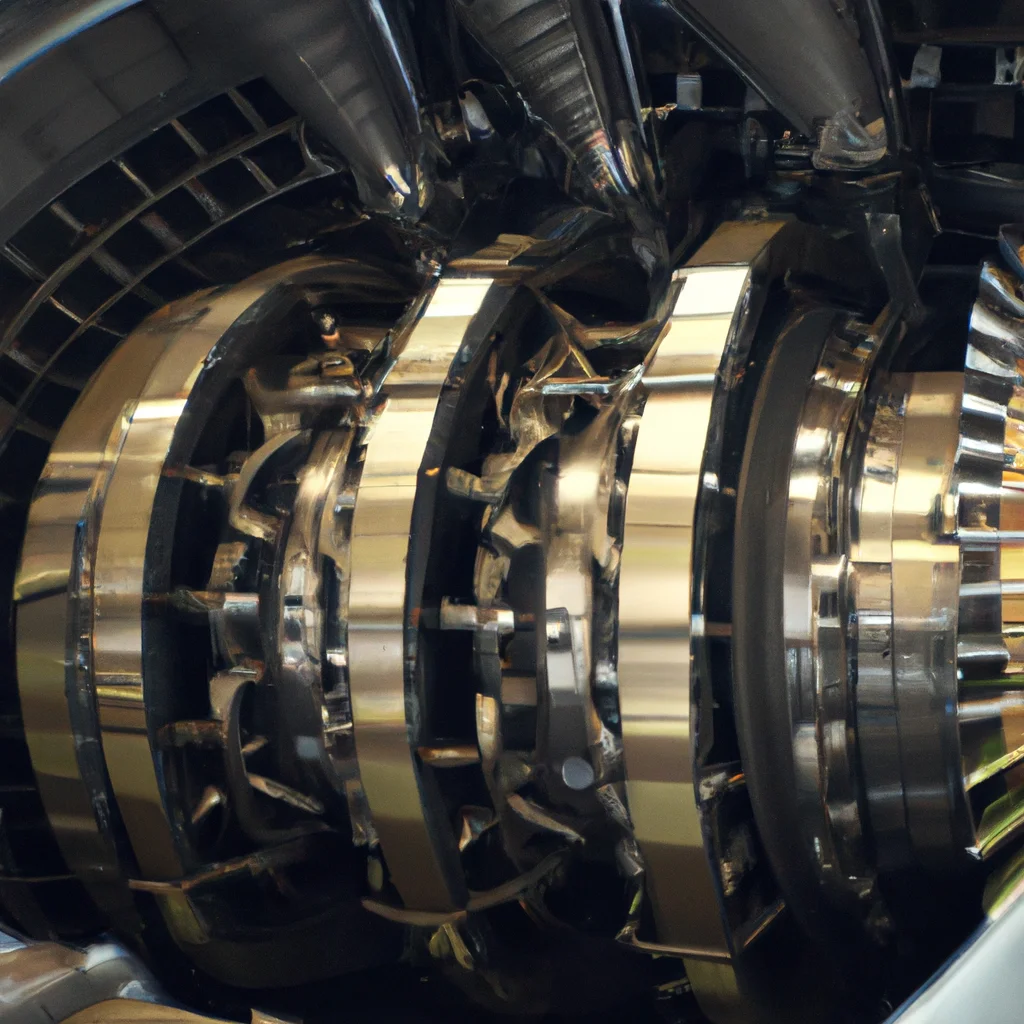How does a gas turbine work?


How does a gas turbine work?
Gas turbines are widely used in many applications, from aerospace technology to power generation. They are highly efficient machines that convert the energy of fuel combustion into mechanical energy. In this article, we will discuss how a gas turbine works, exploring the main components and processes involved in energy conversion.
What is a Gas Turbine?
A gas turbine, also known as a turbine engine, is a type of internal combustion engine that uses a continuous flow of hot gas to rotate a set of blades attached to a shaft. The shaft, in turn, drives a generator or a compressor, depending on the application. Gas turbines are used in various industries, such as aviation, power generation, and transportation.
How Does a Gas Turbine Work?
The basic operation of a gas turbine is similar to that of a jet engine. It involves three main components: the compressor, the combustor, and the turbine.
The Compressor
The compressor is the first component in a gas turbine. Its purpose is to increase the pressure of the air entering the engine. The compressor consists of a set of rotating blades, called rotor blades, and stationary blades, called stator blades. As the rotor blades rotate, they compress the air between them and the stator blades, increasing its pressure and temperature. The compressed air is then directed into the combustor.
The Combustor
The combustor is where the fuel is mixed with the compressed air and burned, producing a hot gas that drives the turbine. The combustor consists of a fuel injector, a flame holder, and a combustion chamber. The fuel injector sprays liquid or gaseous fuel into the compressed air, which then ignites in the flame holder. The flame holder stabilizes the flame and ensures that it burns steadily. The combustion chamber is designed to withstand the high temperature and pressure of the burning fuel-air mixture.
The Turbine
The turbine is the final component in a gas turbine. Its purpose is to extract energy from the hot gas produced in the combustor and convert it into mechanical energy. The turbine consists of a set of rotating blades, attached to the same shaft as the compressor, and a stationary casing. The hot gas from the combustor flows over the turbine blades, causing them to rotate. The rotating blades then transfer their energy to the shaft, which drives the generator or the compressor.
Energy Conversion in a Gas Turbine
The operation of a gas turbine involves several energy conversion processes. The first process is the conversion of the chemical energy of the fuel into thermal energy through combustion. The second process is the conversion of the thermal energy of the hot gas into kinetic energy through expansion in the turbine. The third process is the conversion of the kinetic energy of the turbine rotor into mechanical energy through the shaft.
Gas turbines are highly efficient machines, with efficiencies ranging from 35% to 60%. The efficiency of a gas turbine depends on several factors, such as the compressor and turbine design, the combustion process, and the operating conditions.
Applications of Gas Turbines
Gas turbines are used in many applications, from aviation to power generation. In aviation, gas turbines are used to power aircraft engines, providing thrust for propulsion. In power generation, gas turbines are used in combined cycle power plants, where they work together with steam turbines to generate electricity. Gas turbines are also used in oil and gas production, where they provide power for drilling and pumping operations.
Conclusion
In conclusion, gas turbines are highly efficient machines that convert the energy of fuel combustion into mechanical energy. They consist of a compressor, a combustor, and a turbine, and operate through several energy conversion processes. Gas turbines are used in various industries, from aerospace technology to power generation, and are an essential component of modern infrastructure.
Recent Posts
How do I create an engaging and informative online quiz or assessment?
Creating an engaging and informative online quiz or assessment can be a powerful tool for… Read More
What are the most effective methods for managing and reducing work-related stress in the hospitality industry?
Work-related stress is a common issue in the hospitality industry, where employees often face long… Read More
How can I improve my assertiveness and communication skills in a leadership position?
In a leadership position, assertiveness and effective communication skills are crucial for success. Being able… Read More
What are the key elements of a successful employee recognition and rewards program?
Employee recognition and rewards programs play a crucial role in motivating and engaging employees, as… Read More
How do I effectively manage and respond to customer feedback and reviews?
Customer feedback and online reviews play a crucial role in shaping a company's reputation and… Read More
What are the best strategies for effective time management as a stay-at-home parent?
Effective time management is crucial for stay-at-home parents who juggle multiple responsibilities on a daily… Read More